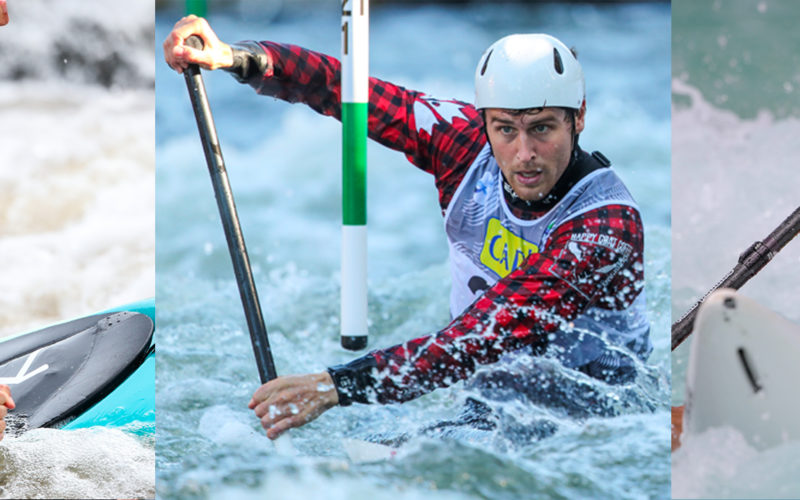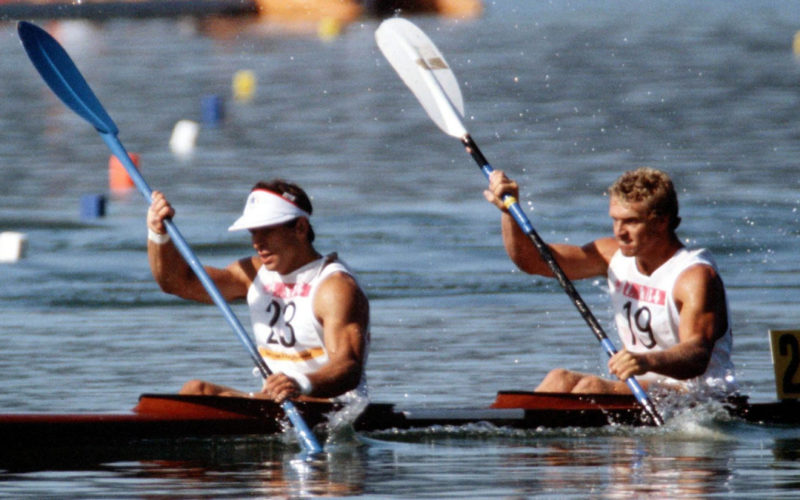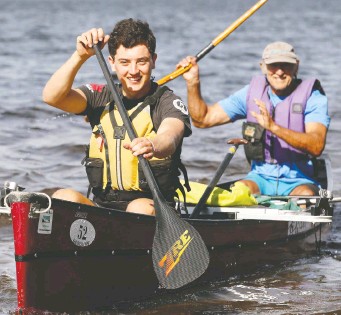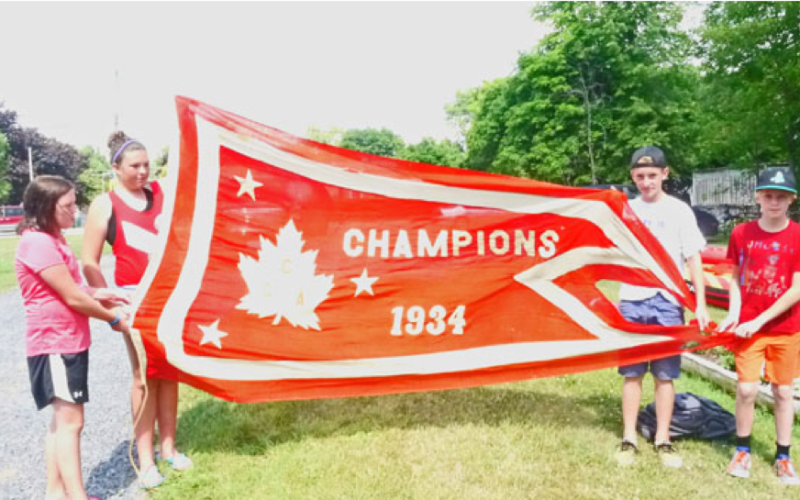An Interview with James Cartwright, Anders Gustafsson and Ian Mortimer
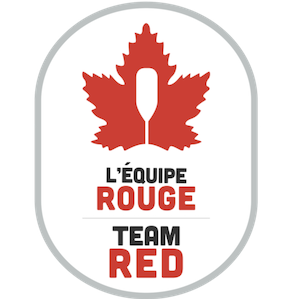
At the Annual Summit in Ottawa, this past December CKC Technical Leaders shared their concept of Team Red. The slide deck from that presentation is available here.
Below is a Paddles Up Q & A about Team Red with Senior Manager Slalom High Performance and Coach Development, James Cartwright, Sprint National Team Head Coach, Anders Gustafsson, and Director of Development, Ian Mortimer, discussing Team Red.
What is Team Red?
Ian Mortimer: Team Red is the concept that we have adopted at a National level to focus our own thinking and approach to improving our performance. And when I say our, I mean our whole country, our whole sport in Canada. We have kept asking ourselves how can we get better? And we kept strongly agreeing within our leadership team that we will only get better if we can find ways to work together, find ways to function as a system, as a team.
Anders Gustafsson: To me Team Red is about getting the basics right. To assure we maximize our performance and results by working together.
Where did the idea come from?
IM: It came from Anders! The name and the seed of the idea started with a discussion Anders shared around our Senior National Sprint Team and how we needed to unite our language when talking about training zones, stroke rates and general programing principles. Basically, to be a team at the senior sprint level we recognized it was vital that we were talking the same language when we were describing our core business: training. Through this discussion, the idea really spread to fill a bigger picture and we realized it captured what we feel is the key to our future sustained success. We also recognize this is an age old problem. We do not want to run away from the fact that we are addressing a problem and having a discussion many have had before. Our idea is to push ourselves to stay focused on the goal on our vision, and put some solutions, whether they are new or old ideas, into action.
AG: I saw a gap in how we currently analyse our performance. I wanted to accurately track both what coaches prescribes for training and what our athletes end up doing. And then analyse how this then translates into racing and better performance. This so we can actually evaluate and learn to improve. In the first stage I tried to describe a system of feedback loops and how they worked together for the CKC High Performance Team – I gave the project the work name RED and when we discussed this as a wider group the concept grew and transformed into Team Red. I like how we never set out to make any dramatic changes or create something “new”. All the information was there already we just needed to apply and use the same principles and then collect and analyse to advance performance.
What is the vision of Team Red?
IM: The vision of Team Red is that Canoe Kayak athletes in Canada are fundamentally on the same team.
I try to keep it as simple as that.
If I need to expand the vision, I focus on the how strong we are as country in Canoe Kayak. We have incredibly gifted coaches, across our disciplines, doing great things with athletes across the county. Our athletes in our development system stack up with anyone in the world. I am 100% confident in the potential of our athletes and coaches across the county. The fact is we struggle to coordinate our efforts. We struggle learning together how to improve. We struggle in sharing our best ideas and learning from our mistakes. With our Team Red vision, I am trying to stay focused on how we can be better at these things.
AG: To motivate all Canadian paddlers to excel beyond what is expected from them. To create a culture that is grounded in an identified sense of mission and shared goals across all Canadian paddlers. Delivery on the basics and truly have a Canadian strategy/system where we are improving the odds for success. I would say I’d like to build this on three values; Mastery, Winning and Fun.
James Cartwright: It’s all about working together to strengthen our athlete development pathways and developing tools that communicate and align our efforts. We need to have a common understanding of our training inputs and athlete development monitoring strategies. When we work together as one team we can achieve more than the sum of our parts.
Sounds like an easy concept to get behind, but the natural question is how?
IM: It starts with us at the National level sharing an approach to training which we believe in. We need to have something common to discuss, implement, monitor and improve over time as partners with our clubs and Provincial and Territorial Partners. There needs to be that starting point for collaboration and discussion, and we have called those inputs, the suggested programing, workouts and testing protocols that we believe in at a National level and what to be the focal point of our collaboration with our larger CKC Team. The next step is collecting the outputs, the data from testing and eventually from training, that we can use, along with our race results, to build that picture of our community. We want to be able to base our conversations with our coaches across the country by focusing on this shared information.
AG: Ian describes this well. Getting us to speak the same language is where this starts and then sharing what we think we know and challenge ourselves to improve in a system where we all are accountable.
JC: The reality is we can’t accomplish our Team Red vision without the support from clubs and regional development centres. We are already partnering with regional coaches to implement international development training camps and competition tours. A good example of this collaboration is in our development projects in Europe this summer like Olympic Hopes, the ECA Slalom Cup in Augsburg and the slalom junior World Championships. Through our Team Red strategies and tools, we aim to be better aligned and will look for club and coach support to implement Team Red athlete assessments.

So where did you start?
IM: We have started by going through a lot of the programing, training zones, yearly training plans that we have developed around the Competition Development Coaching course in sprint. Mark Granger has been a real leader in the process in taking a lot of information and putting it through the filter of making in concise and clear. We have tried to build tools that articulate our vision for the programing applicable to Sprint athletes in the 17-21-year-old age group training at a Train-To-Compete Stage.
A bunch of these tools are posted on our new Team Red section on the website. Our concept was to try our these tools, and an approach of sharing and communicating our input of programing and training approach with our coaches in Sprint working with athletes at this stage through Mark. This pilot has been both successful and provided a lot of good learning to incorporate as we expand our approach.
AG: We started looking at the things we do in the National Team daily. We did a lot of good things, things that we thought was the “same” but they were not exactly the same, so we addressed that. We aligned our programs schedules as much as possible to allow for cross discipline learnings and collaboration. We structured all our testing protocols and most formats for reports are now identical. Next big step is to start digitally tracking training input (from coaches) in a manageable easy way to process those numbers in an elevated way. To do this we still need to work on zone-alignment and choose the best platform. We already collect all our athletes GPS/HR data but overlaying these two inputs is really were it starts to get interesting, as you then compare this to performance. That triangle of information coach input, athlete input and performance is where RED has potential to be very effective. I’m sensitive to not increase the workload on reporting for the athletes so everything needs to be as automated and smooth as possible, something that is achievable 2019.
JC: On the slalom side, we are developing a comprehensive slalom gap analysis tool that will be used in collaboration with regional coaches to quantity junior athlete development beyond a race result or race run time. The tool taps into existing Team Red fitness test protocols and will also incorporate new assessments to track technical, tactical and mental domains. This gap analysis strategy will eventually form the basis of a Slalom Gold Medal Profile that is grounded on a hierarchy of attributes and skills that have a direct impact on slalom performance across the four domains. My hope is that this tool will help isolate areas for improvement and inspire athletes and coaches to have focused conversations aimed at developing gap mitigations strategies. I am pretty excited about rolling this out and I think it will really help our athletes and coaches set very specific training objectives.
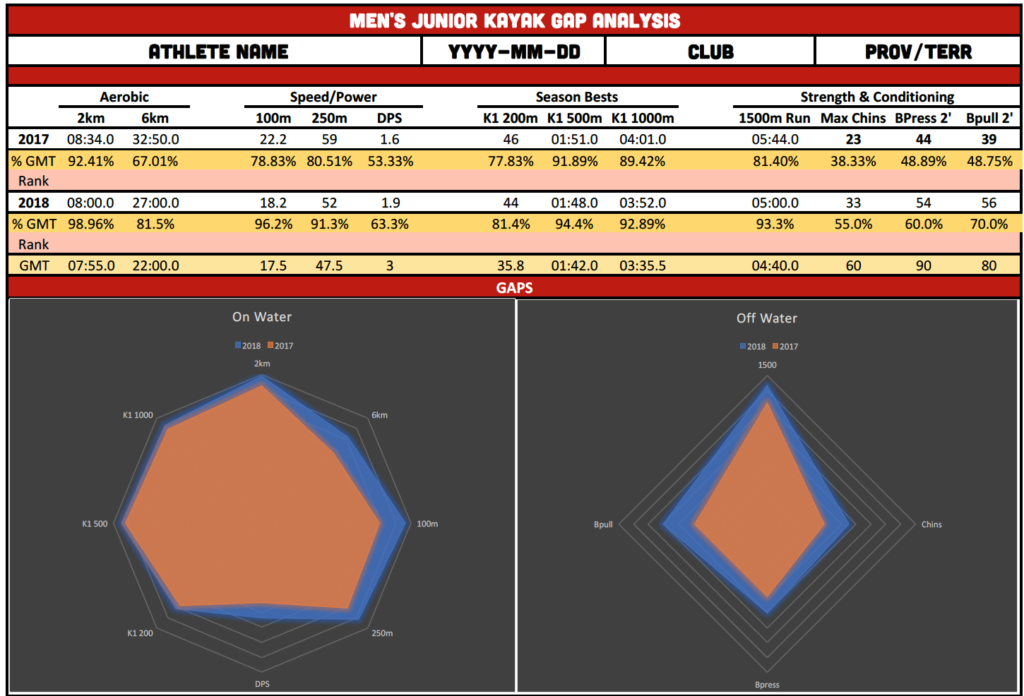
What is next for Team Red?
IM: We have posted our first collected outputs of Testing Data from March on our website. These are sprint testing results from 2km time controls and dryland training. We will be using these results to have some conversations with our partner coaches and see this initial pilot with the Sprint U21/Jr program through.
Taking these learnings, we are going to be focused on a much broader roll out of our Base-7 testing which is designed to challenge the basic fitness of our U14 athletes. This program is exciting because it is non-discipline specific, dry-land testing which can be done without-specific equipment or a gym. This second phase of our pilot of Team Red will look to engage our U14 athletes across the community to challenge themselves to these Base-7 tests, and to improve their results over the summer months.
We will also be developing our platform for sharing our inputs and collecting our outputs in a more user-friendly way with the longer-term goal of a digital platform to make this process streamlined and intuitive.
AG: In the national team we continue to prepare daily; not for the comfortable predictability of yesterday. But also for the realities of today and all of those unknown possibilities of tomorrow. We will work together as a wide Canadian Team Red to allow for better performance today and tomorrow for all.
JC: I am pretty excited about the recent changes we have made to the slalom High Performance program. We now have two national coaches and we can more easily support Next Gen and High Performance projects. I am looking forward to piloting the slalom GMP assessment this fall and also in March next year. We are planning to tie these assessments into east and west development training camps and it’s another opportunity to work with our regional coaches to enhance our athlete development pathways.
The Team Red section of the CKC Website is accessible under the Resources menu.
You can contact James, Ian and Anders via email:
Ian Mortimer – imortimer@canoekayak.ca
Anders Gustafsson – agustafsson@canoekayak.ca
James Cartwright – jcartwright@canoekayak.ca
